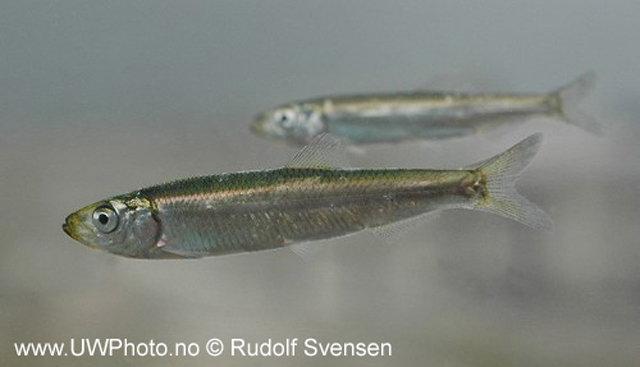| Clupeidae (Herrings, shads, sardines, menhadens) |
| 16 cm SL (male/unsexed); max. reported age: 6 years |
|
pelagic-neritic; brackish; marine; depth range 10 - 150 m, oceanodromous |
| Northeast Atlantic: North Sea and adjacent waters as far north as the Lofoten Area and the west of the British Isles, and Baltic Sea south to Morocco; also in northern Mediterranean (Gulf of Lion and the Adriatic Sea) and Black Sea. |
|
Dorsal spines (total): 0-0; Dorsal soft rays (total): 13-21; Anal spines: 0-0; Anal soft rays: 12-23. Lower jaw slightly projecting, gill cover without any bony radiating striae, teeth rarely present on vomer; belly with a strong keel of scutes; last two anal fin rays not enlarged. No dark spots on flanks. Pterotic bulla absent. |
| Usually inshore schooling, sometimes entering estuaries (especially the juveniles) and tolerating salinities as low as 4 ppt. Shows strong migrations between winter feeding and summer spawning grounds. Moves to the surface at night. Feeds on planktonic crustaceans (Ref. 9900). Spawns at depths of 10-20 m producing 6,000-14,000 pelagic eggs (Ref. 35388). Some spawn almost throughout the year, mainly in spring and summer, near the coast or up to 100 km out to sea, the young drifting inshore. Sold as 'brislings' to canneries. Sprat are used in the production of fish meal and as mink food, less for human consumption (Ref. 9900). Utilized fresh, smoked, canned and frozen; can be pan-fried and broiled (Ref. 9988). |
|
Least Concern (LC); Date assessed: 18 July 2018 Ref. (130435)
|
| reports of ciguatera poisoning |
Source and more info: www.fishbase.org. For personal, classroom, and other internal use only. Not for publication.
